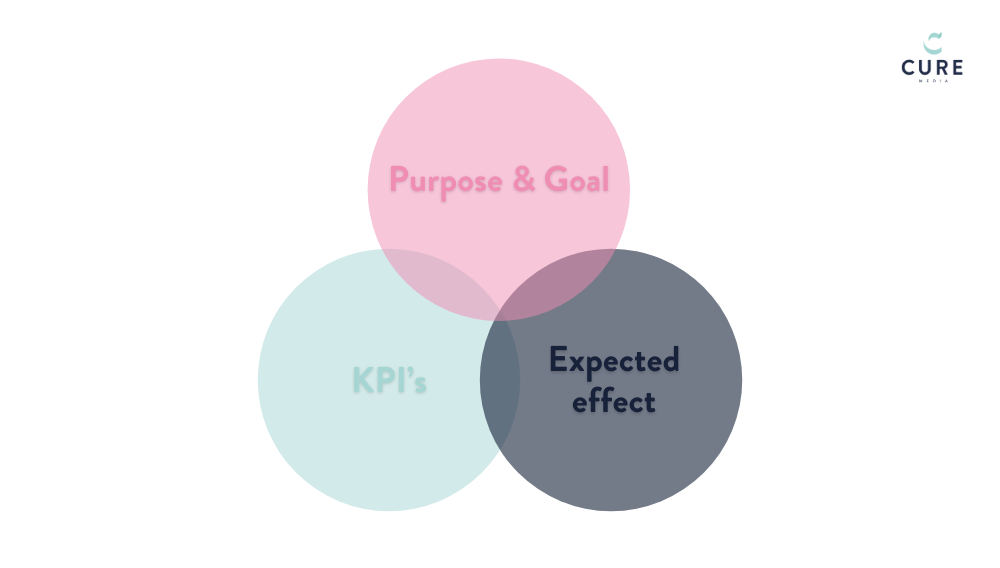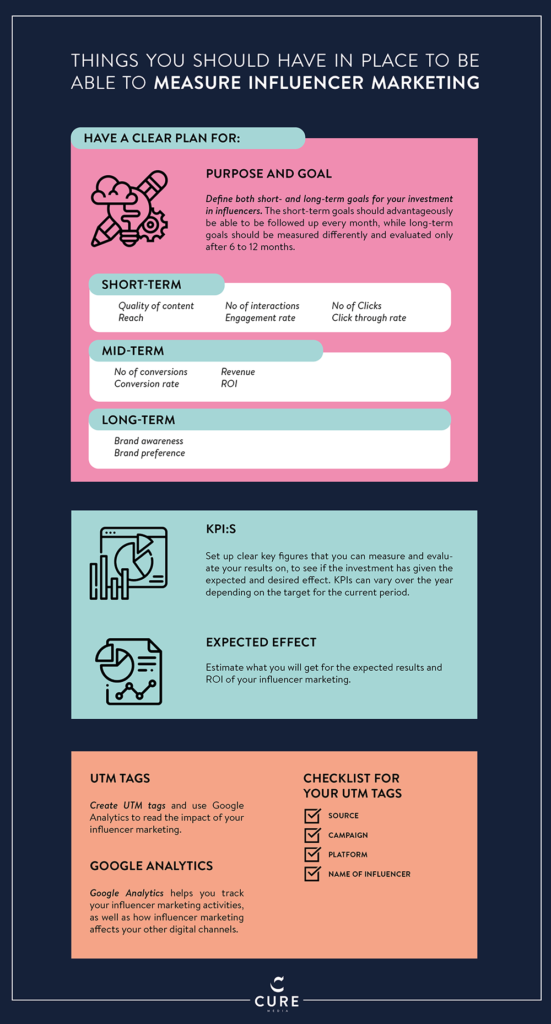The first thing you need to plan for when you choose to invest in influencer marketing is how to measure the results of your investment. In other words, which KPI’s you’re going to measure and use to evaluate your results. But how do we go about measuring influencer marketing?
If you’re not measuring your influencer marketing efforts, you’ll have no idea what results the channel has given – i.e. whether the channel has been a success. If you have the measurements in place, but no specific key figures to evaluate against, you won’t see if the investment has given the expected effects then either. Therefore, defining clear KPIs and setting up measurements is an important prerequisite for success with your influencer marketing. In this article, we’ll go through the things you need to have in place in order to measure influencer marketing.
First and foremost, it’s important that you know what you want the channel to generate. So, before you start, you should establish an overall strategy including the following three parts.
3 things you need when measuring influencer marketing
1. Purpose & Goal
Define short and long term goals for your investment in influencers. The short-term should be easy and useful to follow up every month, while the long-term should be measured differently and evaluated only after 6 or 12 months.
2. KPI’s
Set up clear KPI’s that you can measure and use to evaluate your results to see if the investment has given the expected and desired effect. KPI’s can vary over the year depending on your target for the current period.
3. Expected effect
Estimate what the expected results and ROI of your influencer marketing will be. This is perhaps the most important part of the strategy, and something that can be difficult to define on your own. It could be useful to get some help from an influencer marketing agency – for example, at Cure Media we have a framework that can map these estimates in detail for your particular investment.

Make use of UTM tags and Google Analytics
Once you’re familiar with your overall strategy, there are some specific things you need to do in order to eventually see what results the channel is generating. We’ll go through UTM tags below: why are they necessary and how do you create a good UTM link? You’ll also learn how to use Google Analytics to read the effects of your influencer marketing individually, and also how it affects your other channels.
What is a UTM tag?
UTM stands for Urchin Tracking Module and is information that you add to a URL link so that Google Analytics can read which channel and promotion your traffic is coming from. UTM tags are used on all digital channels nowadays.
Why is it important to have UTM tags to measure influencer marketing?
UTM tags are important because they allow you to see what has been generated by each influencer. Using UTM tags, you can get a detailed insight into what results each specific influencer is generating in Google Analytics. If you don’t use these, you cannot fully measure your influencer marketing and you won’t know what, or who, has performed well or badly.
To identify how an individual influencer has performed, it’s important you specify the source, account name, platform and promotion in the UTM tag. Then, when you know which influencer has performed well and what results the individual has generated, you can go ahead and optimise your influencer marketing. One first step for a successful optimisation process is continuing to collaborate with high-performing accounts and replacing those that didn’t produce the expected effect.
With the information in your UTM tags, you can then identify different types of conversion in Google Analytics – and also the quality of the traffic your influencer marketing has generated. You can do this by looking at bounce rate and page sessions, for example.
How do you create a UTM tag?
There are several different ways to create a UTM tag. Most companies have their own structure for their UTM tags but Google also has the free tool ‘Campaign URL builder’. Create your UTM tag by giving as detailed information as possible. As stated above, make sure to differentiate source, promotion, platform, and the influencer’s name.
Checklist for UTM-tags:
-
- Source (for example Influencer)
- Platform (for example (IGS)
- Name of influencer (for example emilyjohnson)
Below you will find an infographic where we have summarised all the information from this article.

We hope this article has given you some new insights and specific tips on what things you need to have in place for measuring influencer marketing. Download our guide on how to measure influencer marketing for concrete tips and examples on how to measure the impact of your influencer marketing investment – both by itself and in your other channels.



